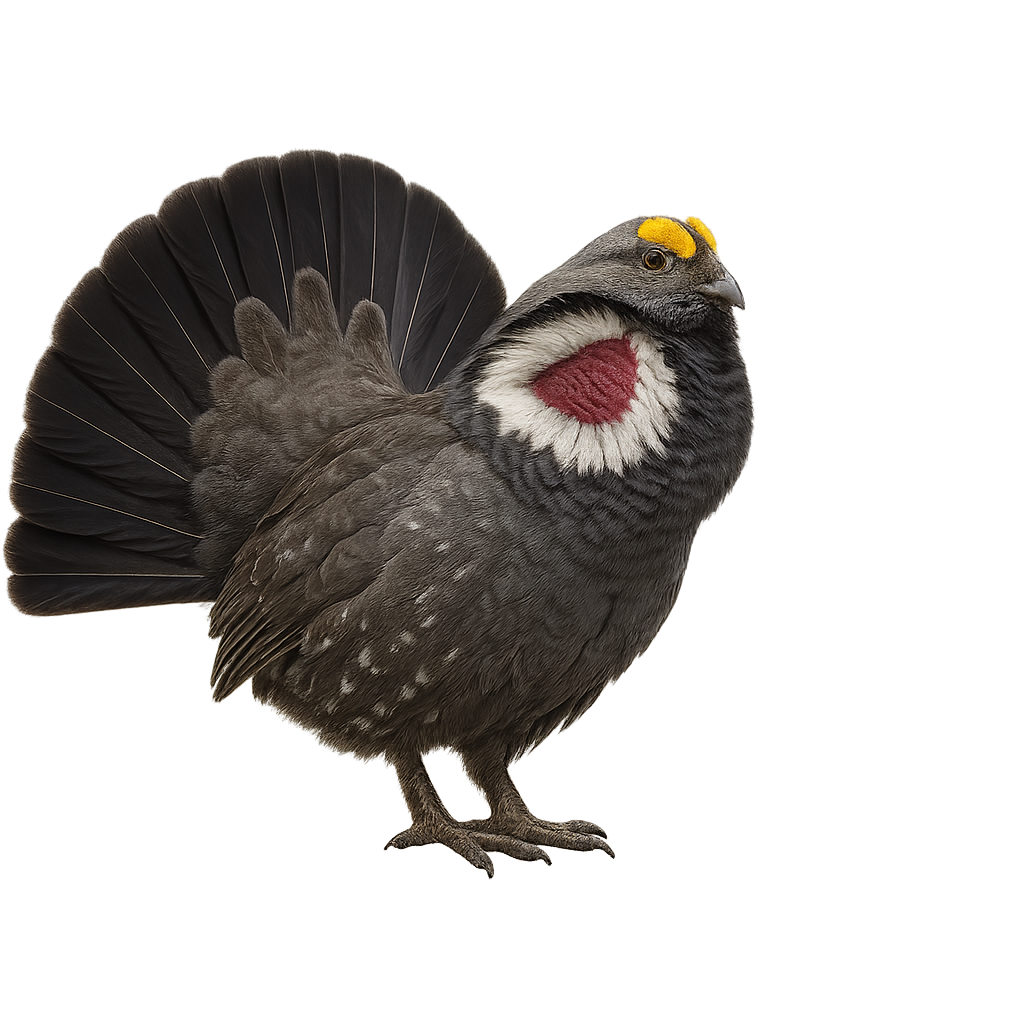Your wildlife photography guide.
Explore the dusky grouse in detail, study its behavior, prepare your shots.
Where to observe and photograph the dusky grouse in the wild
Learn where and when to spot the dusky grouse in the wild, how to identify the species based on distinctive features, and what natural environments it inhabits. The WildlifePhotographer app offers tailored photography tips that reflect the dusky grouse’s behavior, helping you capture better wildlife images. Explore the full species profile for key information including description, habitat, active periods, and approach techniques.
Dusky Grouse
Scientific name: Dendragapus obscurus

IUCN Status: Least Concern
Family: PHASIANIDAE
Group: Birds
Sensitivity to human approach: Suspicious
Minimum approach distance: 10 m
Courtship display: March to May
Incubation: 24-26 jours
Hatchings: April to June
Habitat:
Coniferous forests, shrublands, mountains
Activity period :
Primarily active during the day, with peak activity in the morning and late afternoon.
Identification and description:
The Dusky Grouse, or Dendragapus obscurus, is a medium-sized bird belonging to the Phasianidae family, primarily found in the mountainous regions of western North America. This bird is characterized by its dark gray, almost black plumage, and white markings on its wings. Males display a fan-shaped tail and a yellow vocal sac that inflates during the breeding season to attract females. The Dusky Grouse prefers forested habitats, particularly coniferous forests and shrublands. It mainly feeds on leaves, buds, and insects. Although generally discreet, it can be observed during its spectacular courtship displays.
Recommended lens:
400mm – adjust based on distance, desired framing (portrait or habitat), and approach conditions.
Photography tips:
To photograph the Dusky Grouse, it is advisable to use a telephoto lens of at least 400mm to capture detailed images without disturbing the bird. Look for areas where the bird is active, such as clearings in coniferous forests. Be patient and discreet, as this bird is suspicious. The best photography opportunities often occur early in the morning or late in the afternoon when the light is soft and the bird is more active. Use a tripod to stabilize your camera and achieve sharp images.
The WildlifePhotographer App is coming soon!
Be the first to explore the best nature spots, track rutting seasons, log your observations, and observe more wildlife.
Already 1 439 wildlife lovers subscribed worldwide

